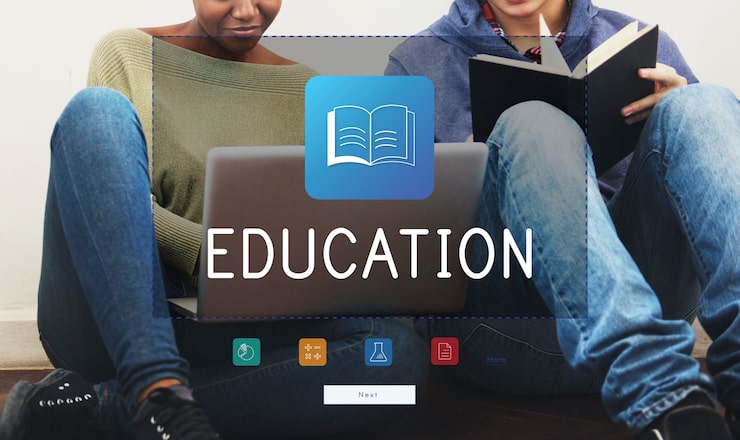Education Policy Updates are redefining the way students, educators, and institutions approach learning across the globe. As nations strive to equip future generations with relevant skills, policies are evolving to incorporate technology, inclusivity, and innovation. These changes impact not only schools and universities but also vocational training, online courses, and lifelong learning initiatives.
Integrating Technology in Classrooms
One of the most visible impacts of Education Policy Updates is the integration of technology in learning environments. Schools now leverage digital platforms, virtual labs, and AI-assisted teaching tools to enhance education. For example, students in urban centers might access immersive science simulations, while rural learners benefit from mobile-friendly e-learning platforms. These policies aim to reduce the digital divide, ensuring equal access to educational resources.
Educators are also adapting their teaching methods. Online collaboration tools, digital whiteboards, and AI tutoring systems allow teachers to personalize learning experiences. Policies encouraging technology adoption enable students to develop skills essential for careers in tech, business, and creative industries, bridging the gap between traditional education and the demands of the modern workforce.
Curriculum Reforms and Skill Development
Globally, curriculum reforms driven by Education Policy Updates focus on competency-based learning, critical thinking, and creativity. Schools in countries like Finland and Singapore emphasize problem-solving, coding, and interdisciplinary projects, preparing students for a dynamic job market. Similarly, higher education institutions integrate entrepreneurship, project management, and digital literacy into their courses, equipping learners with practical skills alongside academic knowledge.
In developing regions, policies prioritize foundational literacy, numeracy, and STEM education. Initiatives like mobile learning kits, community tutoring programs, and hybrid classrooms demonstrate how governments adapt strategies to local needs while maintaining global competitiveness.
Promoting Inclusivity and Equity
Modern Education Policy Updates increasingly prioritize inclusivity. Policies target gender equality, accessibility for students with disabilities, and support for marginalized communities. Programs offer scholarships, flexible learning options, and inclusive teaching materials. For instance, universities in Europe and North America provide adaptive technologies for students with visual or hearing impairments, while Asian countries expand bilingual education to accommodate diverse linguistic populations.
Inclusivity policies not only enhance social equity but also foster collaborative and culturally aware environments. Students benefit from diverse perspectives, preparing them for international collaboration in business, science, and creative industries.
Lifelong Learning and Vocational Training
Education is no longer confined to traditional schooling years. Lifelong learning initiatives reflect the growing demand for adaptable skills. Policies encourage adult education, online certifications, and vocational programs that align with industry needs. For example, tech professionals might take AI or data analytics courses to upskill, while aspiring chefs or logistics managers enroll in vocational programs tailored to practical competencies.
These approaches highlight how Education Policy Updates connect education with real-world application, enhancing employability and career mobility across sectors like travel, food, courier services, and tech startups.
Global Collaboration and Exchange Programs
International collaboration is a key theme in recent Education Policy Updates. Student exchange programs, joint research projects, and collaborative online courses foster cross-cultural learning. A student in India might collaborate with peers in Germany on a business simulation, while a culinary arts student in France explores sustainable cooking techniques through virtual workshops.
Such initiatives not only broaden horizons but also strengthen global networks among students, educators, and entrepreneurs. This exchange of ideas encourages innovation in multiple industries, from gaming and tech to social media marketing and logistics management.
Policy Impacts on Teachers and Educators
Teachers are central to the success of any educational reform. Policies increasingly provide professional development, digital literacy training, and incentives for innovation. For example, educators may receive workshops on integrating AI into lesson plans or using data analytics to track student progress. Empowering teachers ensures that reforms translate into meaningful classroom experiences, benefiting both learners and the broader community.
Real-Life Examples Across Sectors
Education Policy Updates influence industries beyond schools. Tech companies benefit from a workforce trained in coding and digital problem-solving, while businesses in travel, social media, and gaming find employees better prepared for analytical and creative roles. Even courier and logistics services see advantages as vocational programs supply skilled personnel in operations and supply chain management.
In sports and recreational education, policies promote physical literacy and digital engagement through apps and virtual coaching. Food and hospitality programs integrate sustainability practices, reflecting global trends in eco-conscious entrepreneurship. These examples demonstrate the interconnected impact of modern education policies on multiple sectors.
Future Trends in Global Learning
The next wave of Education Policy Updates is likely to emphasize AI-driven learning, green skills, and hybrid education models. Schools and universities may adopt virtual reality for immersive learning, blockchain for secure credentialing, and analytics for personalized instruction. Policymakers aim to balance technological adoption with equity, ensuring that learners from all backgrounds benefit from innovations.
These emerging trends highlight the ongoing transformation of global education, demonstrating how policies shape not only classrooms but also careers, industries, and communities worldwide.
Read also:
menu harga gacoan
mexican desserts
panera bread menu
99 restaurant menu with prices
has buffalo ever won the super bowl
who has never won a superbowl
gill height in cm

